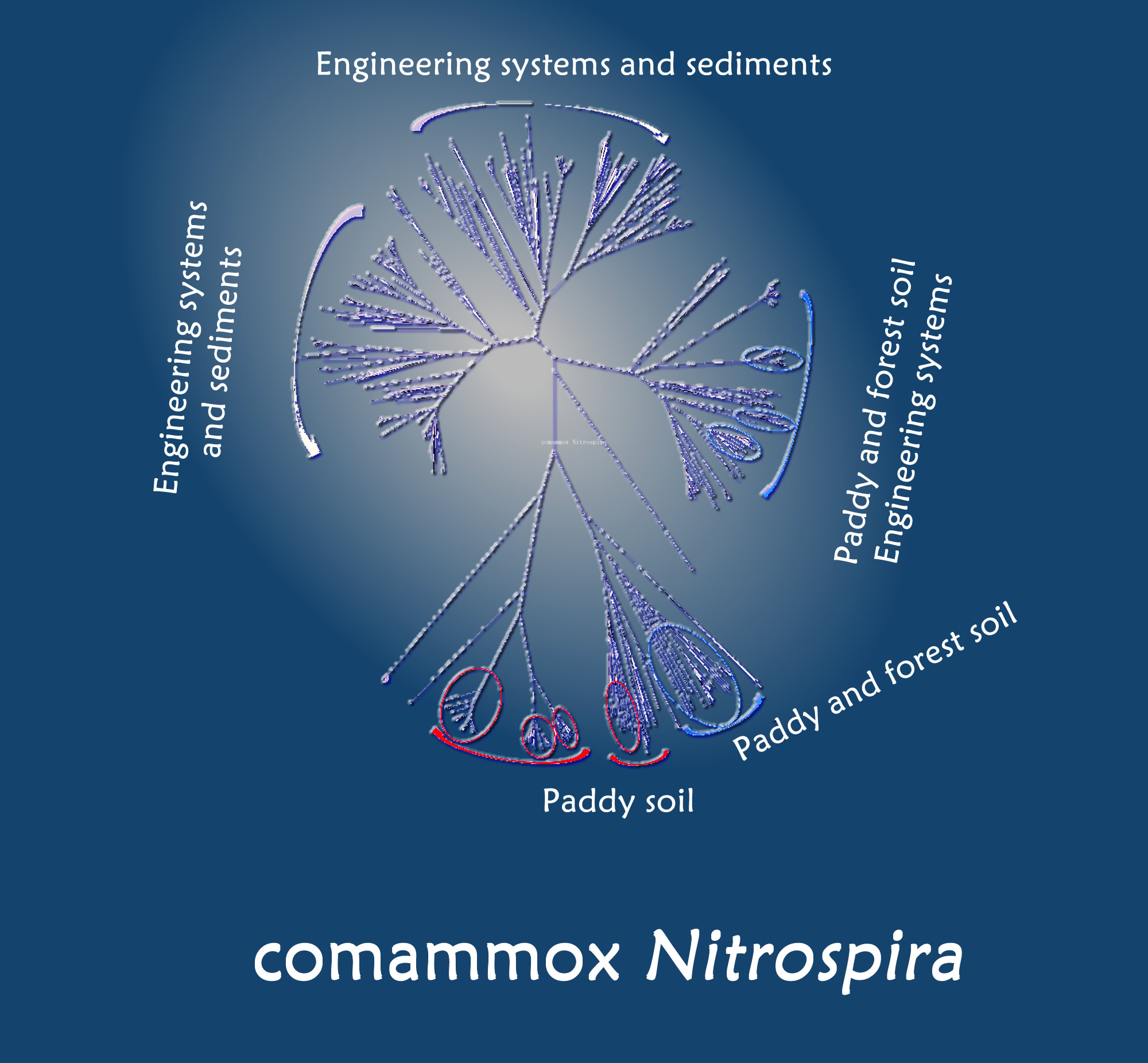The complete ammonia oxidation process mediated by comammox Nitrospira is the key to one-step nitrification. As a special agricultural ecosystem, paddy field accounts for 30% of the total planting area of domestic crops. The periodic alternation of dry and wet forms a typical redox gradient, which is an ideal model for studying the key biogeochemical cycle processes of terrestrial ecosystems. However, the large-scale comammox Nitrospira research in paddy soil is still lack of understanding.
In a study published in Pedosphere, a research group led by Prof. YAO Huaiying from the Institute of Urban Environment of the Chinese Academy of Sciences has made progress in understanding Main environmental drivers of abundance, diversity, and community structure of comammox Nitrospira in paddy soils.
"It is necessary to understand the distribution characteristics of comammox Nitrospira in paddy soil,” said Prof. YAO.
On the basis of rice planting areas, paddy soils were collected from 36 locations in China, and real-time quantitative PCR, high-throughput sequencing of functional genes and QIIME2 were used to comprehensively analyze the distribution, abundance, diversity and community characteristics of comammox Nitrospira clade A and clade B communities. The abundance of comammox Nitrospira clade A was mostly lower than that of clade B, while its diversity was mostly higher than that of clade B.
The amoA gene was further used for high-throughput sequencing of functional genes. Thanks to the difference of amoA gene, comammox Nitrospira clade A and clade B can be distinguished. Taking into account the progress of the amplification sequencing clustering method, researchers use DADA2 for sequence correction and clustering, which is equivalent to clustering units with 100% identity (amplicon sequence variants, ASV).
Phylogenetic analysis showed the ASVs were clustered with the three types of comammox Nitrospira that were currently purely cultured and the evolutionary branch was highly related to the unique habitat of paddy soil.
"To understand the driving factors of comammox Nitrospira, whether the single-factor driving is dominant or the multi-factor driving is dominant, can give us a deeper understanding of comammox Nitrospira,” said Prof. YAO.
Various physicochemical properties were measured and climatic factors collected to investigate the driving factors of comammox Nitrospira. The results showed that soil pH, soil organic matter, total carbon, total nitrogen, latitude, annual mean temperature and annual mean precipitation jointly drove comammox Nitrospira.
These findings will help to evaluate the relative contribution of comammox Nitrospira clade A and clade B to soil nitrification in the future. " It is necessary to conduct more research, especially regarding pure culture and metagenomics,” said Prof. YAO.


Phylogenetic analysis of comammox Nitrospira clade A and clade B
Page:https://doi.org/10.1016/j.pedsph.2022.06.061
Contact:
LI Yaying
Institute of Urban Environment, Chinese Academy of Sciences
E-mail: yyli@iue.ac.cn